Roads remain unpaved in this peaceful slice of paradise in the Nicoya Peninsula, a region renowned as a wildlife and wellness. A surf town known for its boho vibes, Santa Teresa is the Argentinian capital of Costa Rica. Just kidding, but you will not have trouble finding a good steak here.
It has always been a popular surfing destination but now is a place where billionaires vacation. And with such beauty like this, who can blame them? Let’s start this guide with some of the awesome things you can do here.
What to do in Santa Teresa
A beach town where you can relax and take it-day-by-day, you don’t have to plan too much in Santa Teresa. The only must-do? Enjoy the beach. It’s the best place to watch the gorgeous Pacific Ocean sunsets, especially with a Toña beer.
Surfing
Playa Santa Teresa is known for its consistent waves along a wide stretch of palm tree-lined beach. Whether you’re experienced or a beginner, there’s a perfect wave for you somewhere.
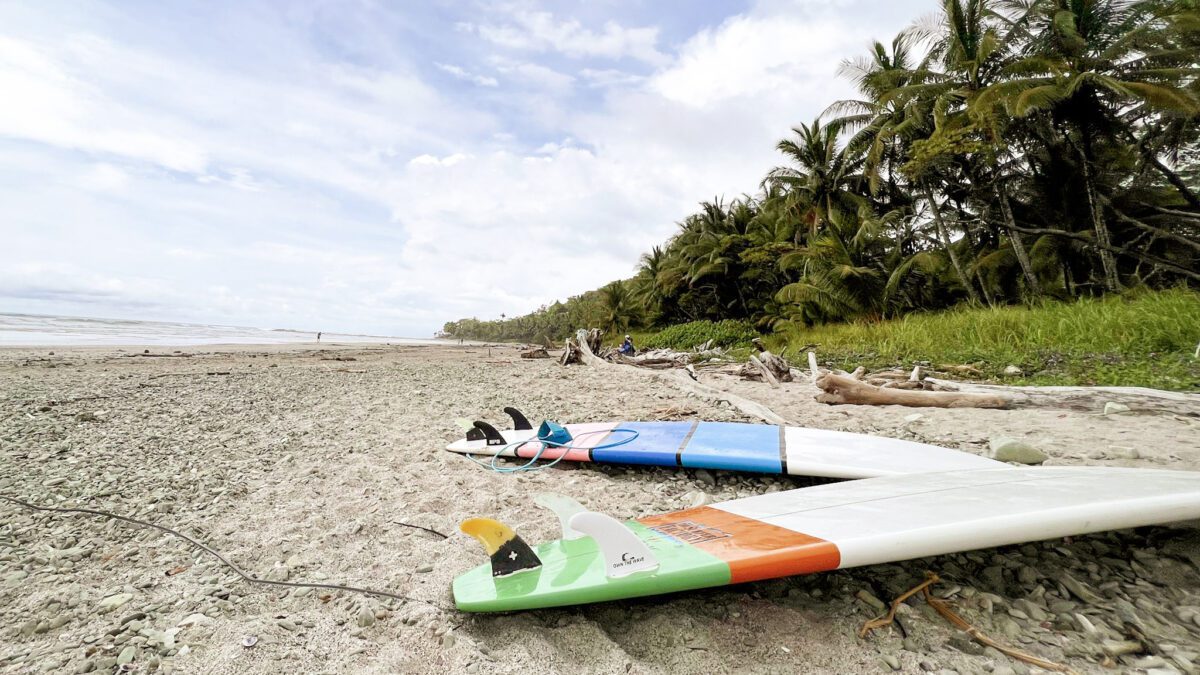
Find board rentals or surf lessons a stones’ throw from the beach, but if in doubt your accommodation will be able to recommend a provider. And if you’re serious about improving, you can join hybrid surf & yoga camps like Pura Vida Surfers or the all-inclusive experience at Zeneidas Surf Camp.
Take yoga classes and other wellness activities
The Nicoya Peninsula in particular is known for an abundance of wellness retreats, exemplifying Costa Rica’s “pura vida” motto. Attain “pure life” with yoga, meditation, and fitness classes at any time of the day.
You can find classes by asking around or checking out the schedules at wellness centers in the area:
- Funky Monkey Lodge – Yoga, tango, and aerial silks in its jungle studio.
- Horizon Yoga – Vinyasa with ocean vistas from a treetop setting.
- Hotel Tropico Latino – Beachfront yoga classes offered two times a day.
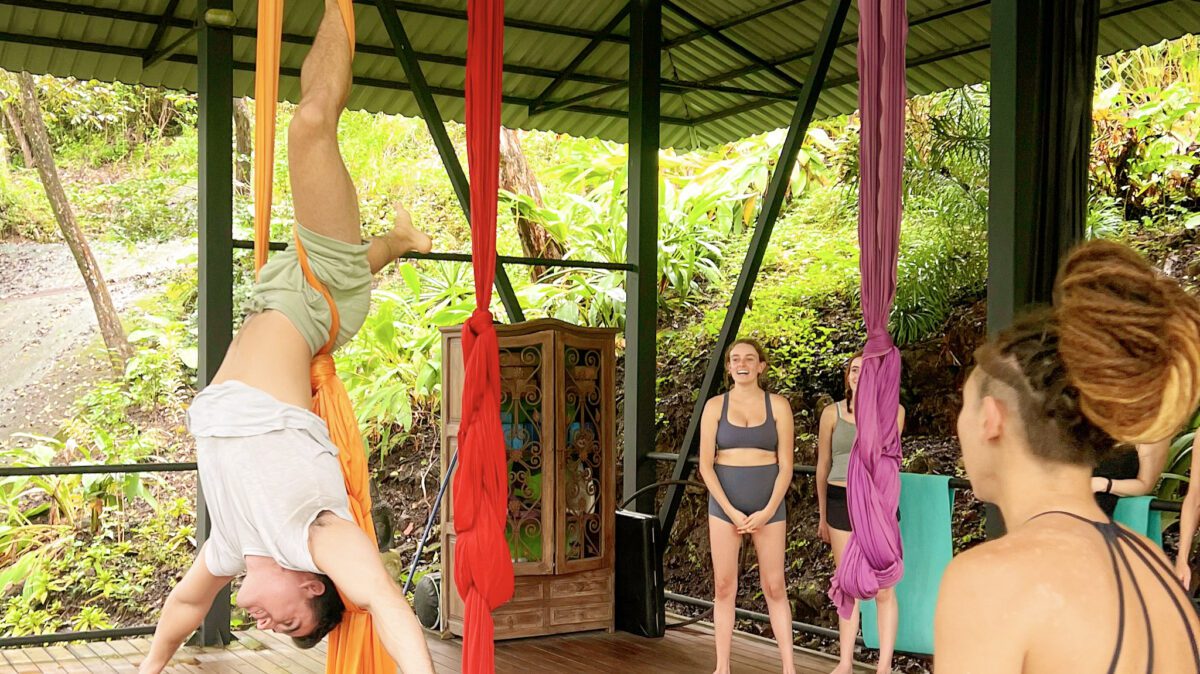
In addition to fitness, after a long day you can get a massage or treatments at one of the many spas in Santa Teresa.
Explore neighboring beaches
You’d be missing out if you didn’t venture out to other beaches along the coast. Head to Playa Mal Pais in the south, or Playa Manzanillo and Playa Hermosa to the north, exploring restaurants and cafes along the way.
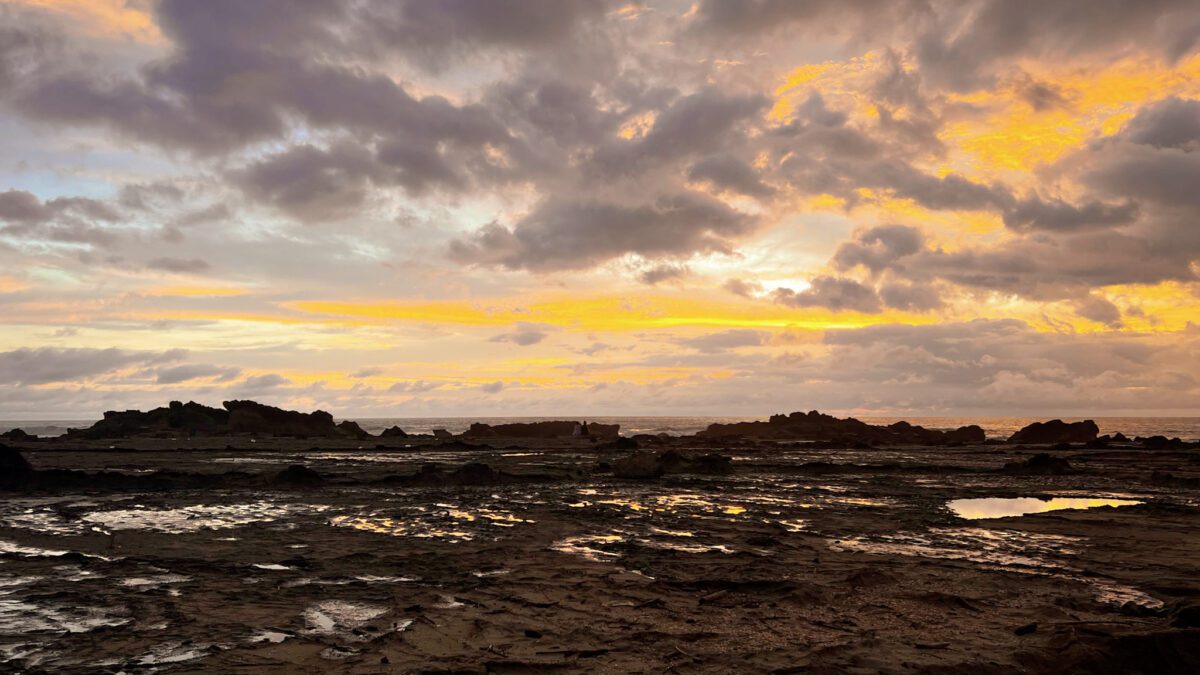
Make a trip to the fishing village of Mal Pais by enjoying a quiet morning on the beach, ziplining, stopping for lunch at Tierra Mar, and visiting the local fish market where fishermen sell their daily catch. End the day by exploring tidepools.
Cross the forest to Montezuma on ATV
Located on the other side of the peninsula, Montezuma is where you’ll chase waterfalls and share the road with wildlife. There’s a bus to take you between towns, but a fun way to get here is by crossing through the forest on ATV via Mal Pais.
The hippie town is charming and reminds you of what Costa Rican beach towns may have been before becoming overrun and overdeveloped by foreigners. This gives it a more authentic feel and some say Playa Grande is one of the best surfing spots for beginners in the whole country, so book a class with The Wave.
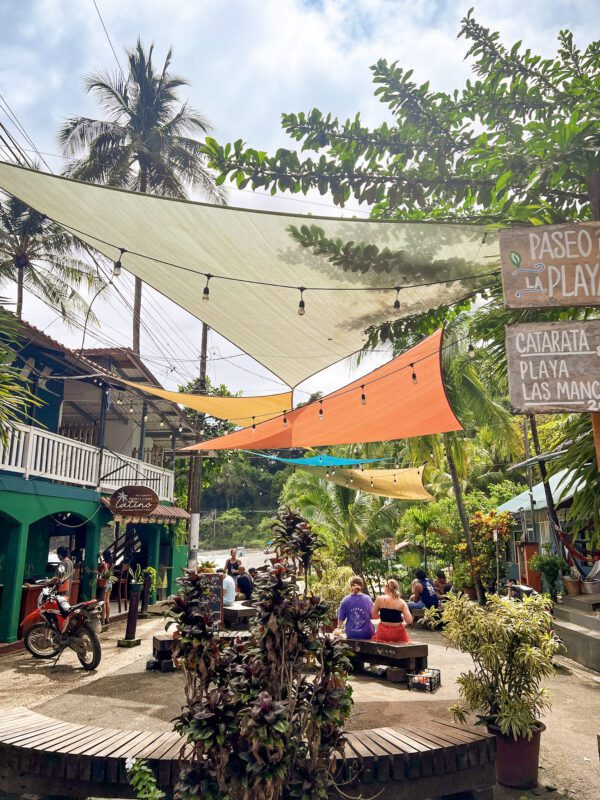
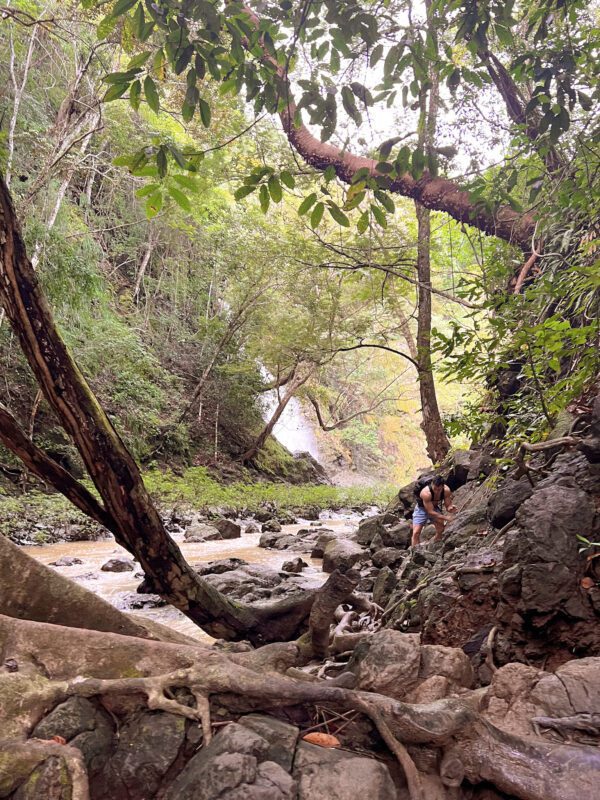
You can also zipline over the canopy, or visit Montezuma Waterfalls. Note the path to the waterfall is challenging through wet terrain and river rock, so bring closed toe water shoes. If it has rained recently, the water will be quite brown (and slightly underwhelming).
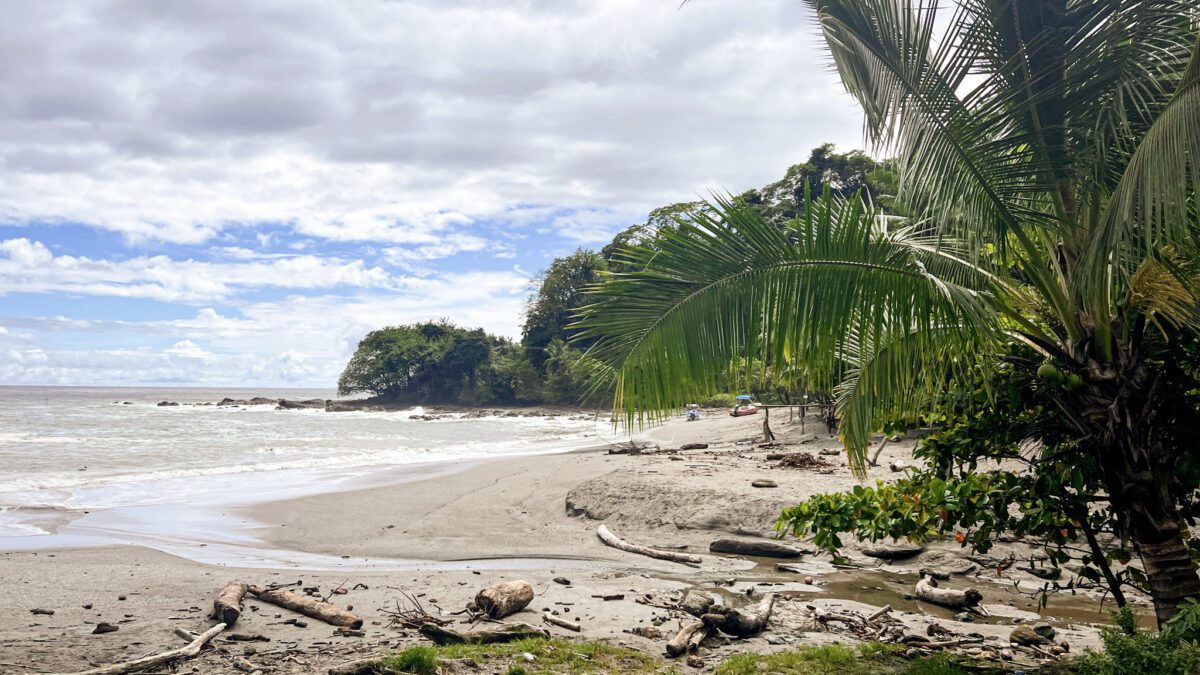
Stop for a bite at Soda Tipica Las Palmeras or Butterfly Brewing Co.
Hike in the Reserva Natural Cabo Blanco
Just north of Montezuma is Cabo Blanco Natural Reserve with hiking trails through the rainforest, resplendent natural abundance. There’s a couple of easy paths plus a harder two-hour hike which rewards you at the end with a beach swim. You’ll encounter more animals than people here (if you’ve been to Manual Antonio Reserve, this is the opposite experience), and that’s an amazing thing.
How to get to Santa Teresa
The fastest way to get to Santa Teresa is to fly into the international airports at San Jose (SJO) or Liberia (LIR), then transfer to a puddle jumper for a short, scenic ride to Cobano Airport. Airlines that currently fly to Cobano Airport near Santa Teresa include:
- Sansa Airways – flies to/from SJO and LIR
- Costa Rica Green Airways – flies to/from SJO
You’ll want to arrange a taxi in advance for the half-hour trip to Santa Teresa.
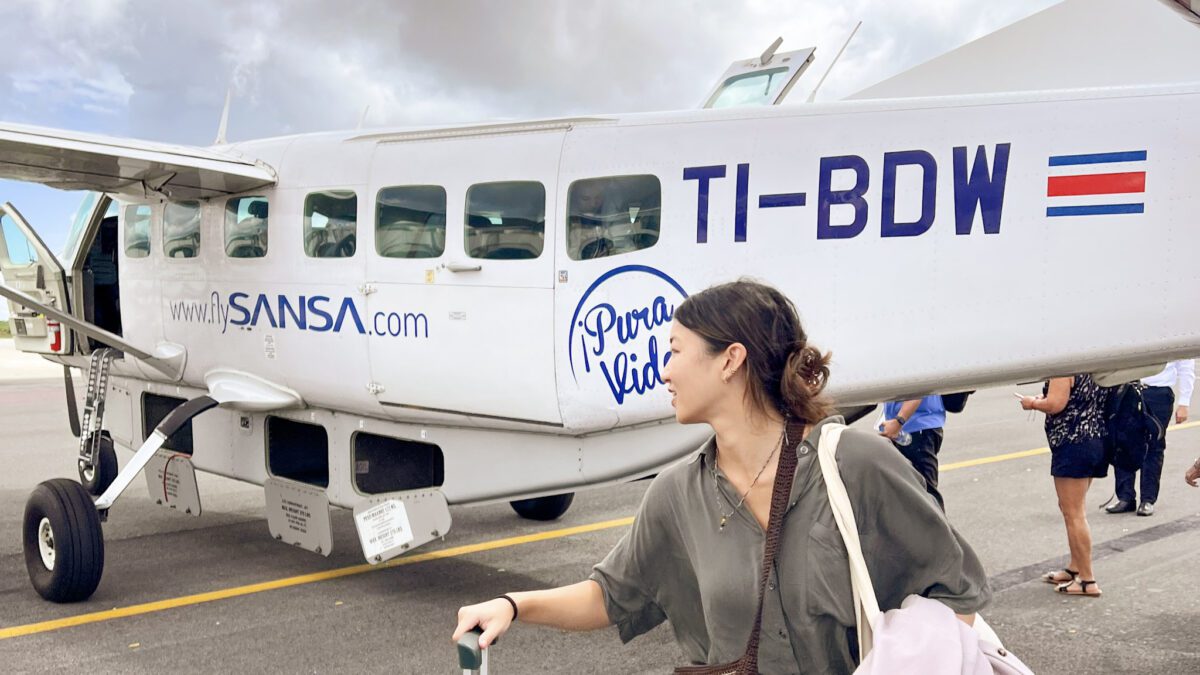
The cheapest way to get to Santa Teresa from international airports are shared shuttles which cost around $50 USD / person. I wouldn’t recommend renting a car since the drive is quite long and windy, but if you do just make sure it’s a 4WD vehicle to handle the town’s unpaved roads.
Where to stay
The beach is a few minutes’ walk from the main street, but don’t underestimate the convenience of a beachfront location.
- Beachfront: Casual Casa Cecilia and Villas Almendros are among the few options in Santa Teresa where you can walk out of your room onto the beach.
- Hillside: You’ll find most hotels on the other side of the main road, perched up the hills. The treetop suites at centrally located Funky Monkey Lodge are well-appointed with spectacular views, although a workout in itself to get up. There’s also dorm options and a range of activities and nighttime events at its bar.
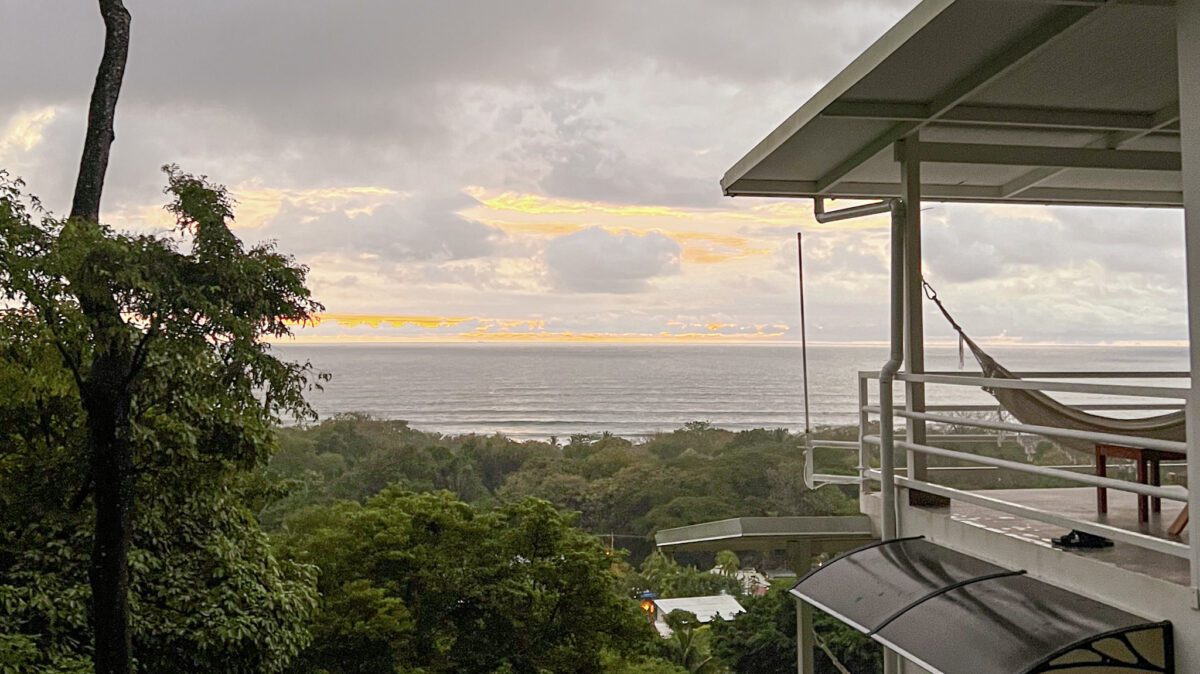
Where to eat
In addition to typical Costa Rican sodas, Santa Teresa offers a range of cuisines. This is one of the world’s blue zones known for longevity, and you won’t have a problem finding for a smoothie or bowl. Eateries include cute cafes, seafood spots, plus some other options for Asian and Latin cuisines.
- Soda Soy Tico – Out of all the typical sodas in town, this one had the best casados. Try the fried fish!
- Joe’s Rotisserie Chicken – Not just chicken, they serve delicious Peruvian dishes
- Zwart Cafe – Tasty, inexpensive breakfast options in an art-filled atmosphere, accompanied by two house dogs (a bull mastiff and a chihuahua!)
- The Bakery – Another fantastic breakfast spot with extensive menu
- Manzú – Pricey but one of the only places where you can eat directly on the beach
- Focacha – Technically in Mal Pais, get yummy pizza and grab focaccia or empanadas as a snack for later

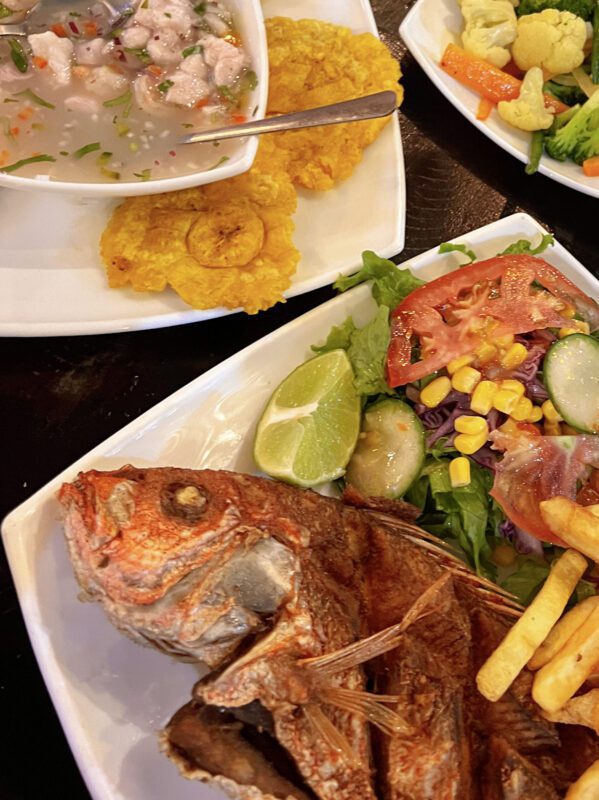
Travel tips
- This is a place where you might be wearing a swimsuit a good part of the day. Similar it’s always good to bring waterproof shoes for rainy areas like Costa Roca. Birkenstocks aren’t going to cut it.
- Bring insect repellant and water shoes that aren’t flip-flops. Hiking sandals are particularly well-suited for the region especially in the wet season (May-October) where trails and streets are wet.
- Small supermarkets are available to buy food and any necessities. There’s also pharmacies and medical services.
- There are a few ATMs in Carmen, but be prepared for hefty fees. Take our cash before getting into town if you can.
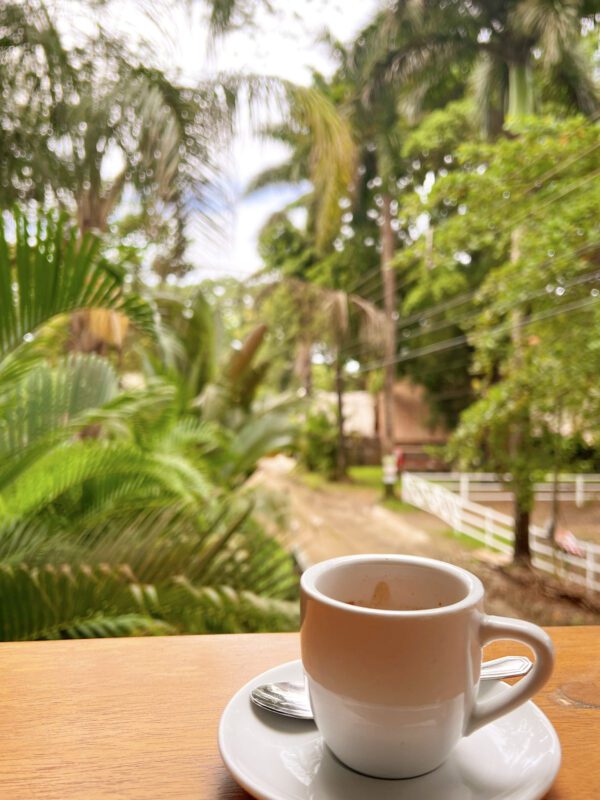

Conclusion
Simply being in Santa Teresa can be relaxing and rejuvenating. It’s been built up for tourism, but in its surroundings you can seek more beauty and authenticity. A visit to this secluded part of Costa Rica will leave you in a better state than when you came.


Ask a question